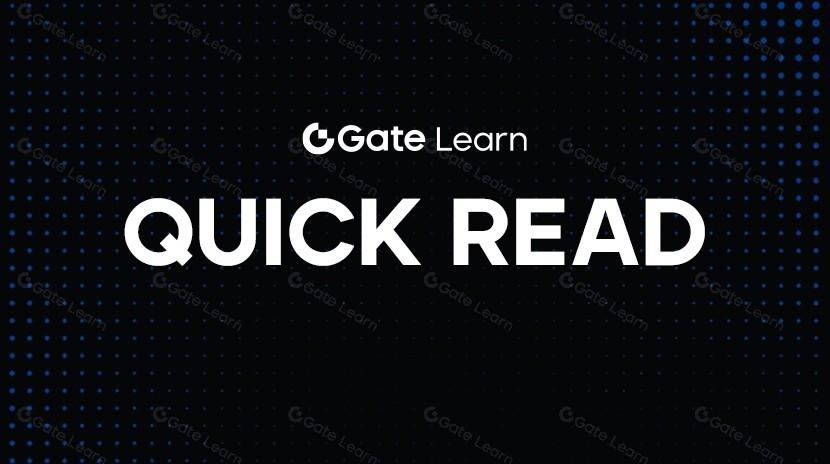O que é KernelDAO: O Surgimento de um Ecossistema Multichain de Restaking
1. Introdução
1.1 Antecedentes
À medida que as finanças descentralizadas (DeFi) continuam a amadurecer, a procura por protocolos mais seguros, eficientes e interoperáveis entre cadeias tem crescido significativamente. Em meio a um ecossistema on-chain cada vez mais complexo e mecanismos de geração de rendimento, o KernelDAO emergiu como um protocolo que integra restaking com estratégias automatizadas, oferecendo uma nova direção para maximizar a utilização de ativos on-chain. Atualmente a operar na Ethereum e na BNB Chain—e compatível com mais de 10 redes blockchain—o KernelDAO fornece aos utilizadores e protocolos níveis sem precedentes de segurança, liquidez e capacidades de geração de recompensas.
Ao contrário de outros protocolos de restaking, o KernelDAO não é uma ferramenta de única finalidade, mas sim um ecossistema em várias camadas. Permite aos utilizadores restacar ativos como ETH, BTC e BNB para construir uma rede de segurança partilhada, combinando isto com cofres de estratégia automatizados para melhorar a eficiência de capital e reforçar a resiliência de risco do protocolo. De acordo com dados públicos, o KernelDAO alcançou mais de $2 biliões em Valor Total Bloqueado (TVL), estabeleceu parcerias com mais de 50 projetos DeFi e está a apoiar mais de 30 projetos de ecossistema em desenvolvimento—tornando-se um representante da próxima geração de infraestrutura DeFi.

1.2 Posição do KernelDAO no Ecossistema Cripto
KernelDAO ocupa uma posição única e importante dentro do ecossistema de criptomoedas. É um ecossistema de restaking altamente inovador na Ethereum e na BNB Chain. Sua missão principal é simplificar a infraestrutura para restaking e geração de recompensas criptográficas, permitindo que usuários ao redor do mundo participem facilmente e ganhem recompensas.
Do ponto de vista da construção do ecossistema, o KernelDAO formou um todo colaborativo organicamente através dos seus três produtos principais: Kelp, Kernel e Gain. O Kelp LRT (rsETH) aceita vários colaterais baseados em ETH na Ethereum, proporcionando liquidez unificada e instantânea e oportunidades de retorno mais elevadas para ativos restaked. Acumulou mais de $1.5 biliões em valor total bloqueado (TVL), estabeleceu parcerias com mais de 150 protocolos DeFi e está operacional em mais de 10 redes de Camada 2, melhorando significativamente a liquidez e eficiência de utilização de ativos dentro do ecossistema Ethereum.
O Kernel, como um produto de segurança compartilhado na BNB Chain, suporta BNB, BTC e outros ativos de recompensa como sua base de segurança econômica. Ele atingiu mais de $630 milhões em valor total bloqueado e mantém um ecossistema em constante expansão, consistindo em mais de 30 protocolos, fornecendo segurança e suporte sólidos para projetos na BNB Chain.
O Gain, como um conjunto de cofres automatizados não custodiais, integra airdrops, recompensas e pontos em várias redes em uma forma simplificada de recompensas colecionáveis. Seu valor total bloqueado ultrapassa US$ 130 milhões, oferecendo conveniência para os usuários participarem de atividades em diferentes redes e ganharem rendimentos.
Dentro do ecossistema mais amplo de criptomoedas, a KernelDAO mantém estreitas conexões com muitos projetos. Por um lado, fornece segurança econômica para aplicações construídas na plataforma Kernel e Eigenlayer, facilitando a operação estável e o desenvolvimento dessas aplicações. Por outro lado, os parceiros dentro do ecossistema Kernel distribuem direitos de governança através de airdrops para os detentores de tokens KERNEL. Esta interação não só fortalece a cooperação entre a KernelDAO e outros projetos, mas também traz benefícios adicionais para os detentores de KERNEL, atraindo assim mais utilizadores para participar no ecossistema da KernelDAO e nos seus projetos afiliados, formando um ecossistema mutuamente benéfico e vantajoso para todas as partes.
2. Análise abrangente do KernelDAO
2.1 Conceitos Básicos e Definições
KernelDAO é um ecossistema pioneiro de restaking multi-cadeia no espaço da criptomoeda. No seu núcleo está uma tecnologia de restaking inovadora que permite aos utilizadores alcançar os objetivos duplos de 'liquidez + rendimento máximo' utilizando principais ativos de criptomoeda como ETH, BTC e BNB. Este novo modelo quebra a limitação do staking tradicional e dos protocolos DeFi, onde os ativos só podem gerar retornos numa única cadeia, aumentando significativamente a eficiência de capital.
Nos sistemas de staking tradicionais, quando os utilizadores apostam ativos numa cadeia específica, esses ativos ficam bloqueados e não podem participar em atividades geradoras de rendimento noutras cadeias. Isto resulta em capital inativo e custos de oportunidade aumentados. A emergência do KernelDAO alterou esta situação. Ao construir uma infraestrutura de restaking entre cadeias, permite aos utilizadores realocar flexivelmente ativos apostados em diferentes cadeias. Ao fornecer segurança a vários projetos e redes, os utilizadores também podem ganhar múltiplos fluxos de recompensas. Por exemplo, o ETH apostado por um utilizador não só pode apoiar a segurança da rede Ethereum, mas, através do mecanismo de restaking do KernelDAO, também contribuir para a segurança económica de projetos na BNB Chain, ganhando recompensas adicionais no processo. Isto maximiza a utilidade dos ativos. Este modelo inovador de restaking multi-cadeia é único em toda a indústria de criptomoedas, oferecendo novos caminhos de realização de valor tanto para os utilizadores como para os desenvolvedores de projetos, e ocupando uma posição de liderança na inovação da indústria.
2.2 Produtos e Funções Principais
O KernelDAO fornece aos utilizadores uma ampla gama de soluções de restaking e de aumento de rendimento através de uma série de produtos inovadores. Estes produtos não só abrangem a Ethereum e a BNB Chain, mas também simplificam a participação dos utilizadores em estratégias DeFi complexas através de automação e design integrado.
2.2.1 Kelp
O Kelp é o produto principal da KernelDAO no ecossistema Ethereum, totalmente conhecido como Kelp LRT (rsETH). Sua função principal é fornecer serviços de restaking líquido para o ETH. No sistema de staking do Ethereum, o staking tradicional muitas vezes resulta em ativos bloqueados sem liquidez, impedindo os usuários de usar esses ativos de forma flexível durante o período de staking. O Kelp resolve criativamente esse problema aceitando diversos colaterais baseados em ETH e oferecendo liquidez unificada e instantânea para os ativos restakeados.
Especificamente, quando os utilizadores depositam ETH no Kelp, recebem rsETH (um token líquido de restaking) que representa os seus direitos de staking. O rsETH pode ser livremente negociado no mercado e utilizado em mais de 50 aplicações DeFi integradas. Isto permite aos utilizadores manter a liquidez dos ativos, ao mesmo tempo que obtêm recompensas adicionais ao participar em várias atividades DeFi. Por exemplo, os utilizadores podem depositar rsETH em protocolos de empréstimo como Aave, Spark e Morpho para obter rendimentos de juros; ou podem adicioná-lo a pools de liquidez em bolsas descentralizadas como o Balancer para obter uma parte das taxas de negociação. Graças a este design exclusivo, o Kelp acumulou mais de $1.5 biliões em valor total bloqueado (TVL), estabeleceu parcerias próximas com mais de 150 protocolos DeFi e opera de forma estável em mais de 10 soluções de camada 2 da Ethereum, contribuindo significativamente para a liquidez e segurança económica do ecossistema Ethereum.
2.2.2 Kernel
O Kernel é o produto de segurança compartilhado na BNB Chain. A sua função principal é apoiar BNB, BTC e outros ativos de recompensa como garantia de segurança econômica, fornecendo serviços de segurança compartilhados para vários projetos na BNB Chain. No ecossistema da BNB Chain, a garantia de segurança é crítica. O Kernel reduz significativamente o custo e a complexidade da configuração da infraestrutura de segurança para projetos através de uma arquitetura de segurança fundida inovadora. Permite aos stakers maximizar as suas recompensas de staking ao participar num modelo de segurança descentralizado.
O Kernel permite aos utilizadores apostar BNB, BTC e outros ativos, que são agrupados numa cofre de segurança que fornece segurança económica a mais de 30 protocolos dentro do ecossistema Kernel. Isto inclui mais de 25 tipos de middleware e mais de 5 protocolos de restaking líquido. Estes protocolos já não precisam de construir os seus próprios mecanismos de segurança complexos e podem em vez disso partilhar a segurança fornecida pelo Kernel, reduzindo assim os custos operacionais e os riscos de segurança. Entretanto, os apostadores podem ganhar recompensas com o desenvolvimento destes protocolos, criando uma situação ganha-ganha. Atualmente, o valor total bloqueado do Kernel excede os $630 milhões, e o seu ecossistema em constante expansão tem atraído inúmeros projetos, contribuindo para o desenvolvimento florescente do ecossistema da BNB Chain.
2.2.3 Ganho
Gain é um conjunto de cofres automatizados não custodiais lançados pela KernelDAO. Sua característica única é integrar airdrops, recompensas e pontos em várias redes em recompensas simples e colecionáveis, proporcionando aos utilizadores uma forma conveniente de aceder e gerir ganhos de várias redes. No complexo mercado de criptomoedas, os utilizadores frequentemente têm de passar muito tempo e esforço a controlar e reclamar recompensas e airdrops de diferentes projetos - um processo que é tanto tedioso como propenso a omissões. O Gain simplifica este processo através de estratégias automatizadas.
O Gain suporta vários ativos, incluindo ETH, rsETH (da Kelp DAO), ETHx (da Stader Labs) e stETH (da Lido Finance). Quando os utilizadores depositam ativos no Gain, os cofres alocam automaticamente os ativos de acordo com estratégias predefinidas para participar em airdrops e programas de recompensas em diferentes redes. Por exemplo, o Gain pode encaminhar os ativos dos utilizadores para redes Layer 2 como Linea e Scroll para receber as suas recompensas de airdrop. Simultaneamente, pode participar em atividades em protocolos DeFi como Pendle e Lyra para gerar rendimentos adicionais. Desta forma, os utilizadores podem obter recompensas de várias redes e protocolos sem operações manuais, maximizando os seus retornos. Atualmente, o Gain tem um valor total bloqueado de mais de $130 milhões e é utilizado por cerca de 15.000 utilizadores em seus quatro cofres automatizados, tornando-se uma ferramenta essencial para utilizadores que procuram obter rendimentos no espaço criptográfico.

3. Arquitetura e Design Técnico do KernelDAO
3.1 Núcleo Técnico I: Sistema de Restaking
O sistema de restaking da KernelDAO é composto por três componentes principais:
Suporte a Stake de Vários Ativos
Staking de ETH: Suporta tanto o staking nativo como o restaking através de Tokens de Staking Líquido (LSTs) como stETH, rETH e cbETH.
Suporte BTC: Integrado na arquitetura PoS através de ativos embrulhados inter-cadeia como WBTC ou BTCB.
BNB e Outros Ativos: Staking suportado nativamente na BNB Chain; outros ativos são integrados nas vaults de estratégia após serem bridged.
b. Mecanismo de Delegação de Validadores
Os utilizadores podem optar por delegar ativos apostados a um validador específico ou tê-los distribuídos pelo protocolo em todo o cluster de nós validadores do Kernel. Os nós de alto desempenho são elegíveis para incentivos adicionais. Se as penalidades forem desencadeadas (por exemplo, dupla assinatura), o mecanismo do pool de seguros é ativado para compensar e garantir a segurança dos fundos do utilizador.
c. API de Segurança Compartilhada
KernelDAO fornece uma interface API unificada para protocolos de terceiros:
Os projetos podem aceder ao cluster de validadores do Kernel simplesmente chamando a API.
Não é necessário construir suas próprias pools de staking, reduzindo significativamente a barreira para lançar uma infraestrutura segura.
Seleção personalizada de validadores, configurações de distribuição de recompensas e módulos de arbitragem de governação podem ser configurados.
3.2 Núcleo Técnico II: Motor de Estratégia de Cofre
O sistema Vault é outro componente fundamental do KernelDAO, projetado para alocação otimizada de capital e geração de rendimento.
um. Tipo de estratégia (Componível)
Estratégia de Empréstimo: Aloca capital para protocolos como Aave, Compound e Venus para ganhar juros de empréstimo.
Estratégia de Agricultura LP: Fornecer liquidez em plataformas como PancakeSwap e Uniswap para ganhar taxas de negociação e recompensas de mineração.
Estratégia de staking: Participa no staking de validadores e nas recompensas da rede PoS.
Estratégia Delta-Neutral: Combina posições longas e curtas para capturar oportunidades de arbitragem mantendo a estabilidade do principal.
Arbitragem entre Cadeias: Explora as diferenças de preço de ativos entre diferentes blockchains.
b. Sistema de Alocação Automática
KernelDAO usa um mecanismo de orquestração automatizado proprietário, incluindo:
Otimizador de Rendimento: Realoca dinamicamente o capital com base nas taxas de rendimento em tempo real.
Motor de Modelagem de Risco: Ajusta a alocação de fundos usando pontuações de risco on-chain, volatilidade de mercado e distribuição de TVL.
Módulo de Governança da Estratégia: A governança da comunidade decide quais estratégias podem ser implementadas e define os parâmetros de risco e as proporções de partilha de lucros.
Padrão do Contêiner de Estratégia (SDK de Cofre)
Todas as estratégias são construídas utilizando um padrão de interface unificado - o KernelVault SDK - permitindo que os desenvolvedores da comunidade e os utilizadores institucionais construam e implementem livremente estratégias personalizadas. Este framework garante uma alta escalabilidade.
4. Expansão do Ecossistema Multichain KernelDAO
4.1 Implementações e Estratégia Multichain Atuais
Até agora, o KernelDAO alcançou a implementação nativa nas seguintes redes blockchain:
Ethereum Mainnet
Cadeia BNB
Arbitrum One
Optimismo
Polygon POS
Avalanche C-Chain
Fantom
Era zkSync
Linea
Rolar
Esta estratégia de implantação traz uma flexibilidade de capital significativa e uma ampla cobertura de mercado:
Os utilizadores podem transferir fundos entre cadeias de forma contínua para restaking;
As Vaults automatizadas podem implementar estratégias em várias cadeias, aumentando a composição do rendimento;
A composabilidade do protocolo é significativamente melhorada, atraindo mais protocolos DeFi para integrar a camada de segurança do Kernel.
4.2 Plano de Desenvolvimento do Ecossistema
KernelDAO não é apenas uma ferramenta de protocolo - está a construir uma Rede de Segurança Programável & Yield, que inclui:
a. SDK do Kernel & Incentivos para Desenvolvedores
SDK permite aos desenvolvedores construir rapidamente ferramentas de staking, estratégias de rendimento ou interfaces de governança;
Estratégias de alta qualidade são elegíveis para subsídios $KERNEL e partilha de receitas;
Um fundo de ecossistema irá apoiar a incubação de 100 subprojetos.
b. Kernel Launchpad
Oferece serviços de lançamento de staking;
Suporta novos projetos para lançamento com base na camada de segurança do Kernel e integração automática com estratégias do Vault;
A comunidade DAO irá rever os padrões de integração e modelos de governança.
c. Camada de Governança do Kernel
Todos os projetos dentro do ecossistema Kernel podem se conectar à rede de governança do Kernel;
Os detentores de $KERNEL votam em parâmetros-chave, como pesos de distribuição de rendimento e ativação de estratégia;
Um modelo unificado de governança transprotocolo e transcadeia será gradualmente estabelecido.

5. KernelDAO ($KERNEL) Tokenomics
5.1 Informações Básicas sobre o Token KERNEL
1. Visão Geral do Token
- Nome: Token Kernel
- Ticker: $KERNEL
- Tipo: Token de Governança e Utilidade
2. Informação de Fornecimento
- Fornecimento total: 1 bilhão de $KERNEL
- Circulating Supply: A ser anunciado mais perto do Evento de Geração de Tokens (TGE)
3. Alocação de Tokens
A distribuição de $KERNEL segue o princípio “Comunidade em Primeiro Lugar”, com a maioria dos tokens alocada para os utilizadores e participantes do ecossistema:
Comunidade & Parceiros do Ecossistema: 60%
Recompensas da Comunidade & Airdrops: 55%
20% alocados para várias rondas de airdrops
35% reservados para futuros incentivos para promover a atividade do ecossistema e a participação do usuário
Parceiros Ecológicos: 5%
Para a criação de mercado, liquidez on-chain e suporte ao ecossistema
Venda Privada: 20%
Inclui rondas privadas estratégicas concluídas e futuras
Equipa e Conselheiros: 20%
Bloqueado por 6 meses após TGE, seguido por um desbloqueio linear ao longo de 24 meses

5.2 Token de Utilidades $KERNEL
Funcionalidades principais
Governança:
Os detentores de $KERNEL podem participar na tomada de decisões relativamente aos três principais produtos da Kernel - Kelp LRT, Infraestrutura Kernel e Gain. Os tópicos de governação podem incluir atualizações de protocolo, alocação de fundos e novas parcerias.
Reaplicação:
Os utilizadores podem voltar a apostar $KERNEL para fornecer segurança económica partilhada para protocolos, middleware e aplicações descentralizadas dentro do ecossistema Kernel.
Mecanismo de Recompensa (Recompensas):
Os detentores de $KERNEL podem ganhar recompensas de staking de protocolos e middleware parceiros.
Função de Extensão
Provisão de liquidez:
Os utilizadores podem fornecer liquidez $KERNEL em Automated Market Makers (AMMs) para ganhar recompensas adicionais.
Mecanismo de Seguro (Caso de Uso Futuro):
O staking $KERNEL irá eventualmente suportar a camada de seguro, protegendo contra eventos de penalização em rsETH (LRT) e na rede Kernel.
5.3 Casos de Uso do Ecossistema
O token $KERNEL foi profundamente integrado nos produtos principais e no ecossistema da Kernel:
- Kelp LRT: $KERNEL desempenha um papel vital na segurança de mais de $2 bilhões em Valor Total Bloqueado (TVL), particularmente através do rsETH, um dos maiores tokens de restaking líquido na Ethereum.
- Infraestrutura do Kernel: Suporta mais de 25 projetos de ecossistema, incluindo Tokens de Reinvestimento Líquido (LRTs), middleware e aplicações descentralizadas.
- Ganho: Alimenta um cofre de recompensas tokenizado que gere mais de $200 milhões em TVL, oferecendo composabilidade eficiente DeFi.
- Integrações colaborativas: Funciona com os principais protocolos DeFi e projetos de middleware, melhorando ainda mais a funcionalidade e acessibilidade do $KERNEL.
Aviso de Listagem de Token $KERNEL: O token KERNEL em breve será listado na Gate.io. A negociação começa às 20:00 (UTC+8) em 14 de abril de 2025. Clique para negociar: https://www.gate.io/pt-PT/trade/KERNEL_USDT
6. História do Desenvolvimento do KernelDAO & Estado Atual
Recapitulação do Marco 6.1
Desde a sua fundação, KernelDAO alcançou um progresso significativo no setor de restaking multi-cadeia, construindo gradualmente um ecossistema amplo e vibrante.
Desde as fases iniciais, a KernelDAO atraiu ampla atenção através do seu inovador conceito de restaking multi-cadeia. Em 2024, o projeto alcançou grandes avanços na angariação de fundos, garantindo um total de $10 milhões em financiamento. Esta rodada foi liderada por fundos de primeira linha como Binance Labs, Laser Digital, SCB Limited e Hypersphere Ventures. O financiamento não só forneceu um forte apoio financeiro para o desenvolvimento contínuo do projeto, mas também destacou o reconhecimento do mercado da sua inovação e potencial.
No mesmo ano, o KernelDAO lançou um fundo ecossistémico estratégico de $40 milhões, apoiado pela Laser Digital, SCB Limited, Hypersphere Ventures e Cypher Capital. O fundo tem como objetivo apoiar mais de 45 novos projetos ao integrar a infraestrutura de restaking do Kernel, expandindo ainda mais os casos de uso do $KERNEL dentro do ecossistema BNB e acelerando o crescimento do ecossistema.
6.2 Estado Operacional Atual em 2025
6.2.1 Valor Bloqueado e Escala de Ativos
Atualmente, os produtos principais da KernelDAO estão a ter um desempenho excelente em termos de valor bloqueado (TVL) e escala de ativos. O Kelp, como um produto de reposição de liquidez no Ethereum, acumulou mais de $1.5 mil milhões em TVL. Este feito é atribuído ao seu design inovador, uma vez que o Kelp aceita vários colaterais baseados em ETH para fornecer liquidez em tempo real unificada para os ativos reposicionados. Após depositarem ETH, os utilizadores recebem rsETH, que pode ser livremente negociado no mercado ou utilizado em mais de 50 aplicações integradas DeFi. Isto tem atraído um grande número de utilizadores, levando a uma acumulação massiva de valor bloqueado e tornando o Kelp uma força significativa no setor de reposição de liquidez do Ethereum.
Kernel também alcançou um notável sucesso na Chain BNB, com um valor total bloqueado superior a $630 milhões. Ao apoiar BNB, BTC e outros ativos de recompensa como segurança econômica, a Kernel fornece serviços de segurança compartilhada para mais de 30 protocolos na Chain BNB. Isso reduz o custo e a complexidade de configurar a segurança para projetos, atraindo muitos para se juntarem ao seu ecossistema, impulsionando assim um crescimento contínuo no valor bloqueado e tornando a Kernel um dos maiores provedores de segurança econômica na Chain BNB.
O Gain, enquanto cofre automatizado não custodial, gere também uma quantidade significativa de ativos, com um valor total bloqueado superior a $130 milhões. O Gain simplifica o processo para os utilizadores ganharem recompensas ao fundir airdrops, recompensas e pontos em várias redes em recompensas colecionáveis simples. Suporta vários ativos como ETH, rsETH, ETHx, stETH e atraiu aproximadamente 15.000 utilizadores para utilizarem os seus quatro cofres automatizados. Isto aumentou eficazmente a escala de ativos e forneceu aos utilizadores uma forma conveniente de ganhar recompensas no complexo mercado de criptomoedas.
6.2.2 Parcerias e Desenvolvimento Ecológico
No que diz respeito a parcerias, o KernelDAO está a expandir ativamente a sua rede de colaborações, tendo estabelecido parcerias com muitos projetos conhecidos. Destacam-se as colaborações com a Mira (co-processador de IA) e a YieldNest (liquid restaking) que têm chamado a atenção. A Mira e a YieldNest anunciaram planos para alocar 1-2% do seu fornecimento de tokens aos detentores de KERNEL. Este modelo colaborativo não só fortalece a ligação entre o KernelDAO e os seus parceiros, como também fornece benefícios adicionais aos detentores de KERNEL, atraindo mais utilizadores para participar no ecossistema do KernelDAO. Além disso, o KernelDAO tem mais de 25 parceiros que cobrem diversas áreas, todos a colaborar com o KernelDAO para impulsionar o desenvolvimento e crescimento do ecossistema.
Em termos de desenvolvimento do ecossistema, o KernelDAO recebeu um forte apoio do seu fundo do ecossistema. O fundo estratégico de ecossistema de $40 milhões anunciado em 2024 é apoiado por várias firmas de investimento conhecidas. Este fundo tem como objetivo apoiar mais de 45 novos projetos, ajudando-os a integrar a infraestrutura de restaking do Kernel, enriquecendo ainda mais os casos de uso e funcionalidades do ecossistema do KernelDAO. Promove o desenvolvimento sinérgico entre projetos dentro do ecossistema, atraindo mais desenvolvedores e usuários, criando um ciclo de feedback positivo no crescimento do ecossistema e expandindo continuamente a influência do KernelDAO no campo de restaking multi-cadeia.
Conclusão
Para os investidores, o KernelDAO apresenta uma oportunidade altamente inovadora e promissora. Seu modelo de restaking multicadeia aborda exclusivamente os pontos problemáticos no staking tradicional, e sua listagem na Binance aumentou a visibilidade e a liquidez. Isso apresenta um novo potencial de investimento para aqueles que acompanham de perto o desenvolvimento do projeto, especialmente seus esforços para superar os desafios atuais e expandir o ecossistema.
No entanto, investir na KernelDAO envolve riscos. A alta volatilidade do mercado de criptomoedas pode levar a flutuações significativas no preço do $KERNEL, potencialmente resultando na desvalorização do ativo. Portanto, os investidores devem avaliar cuidadosamente sua tolerância ao risco e tomar decisões informadas antes de investir na KernelDAO.
Artigos relacionados
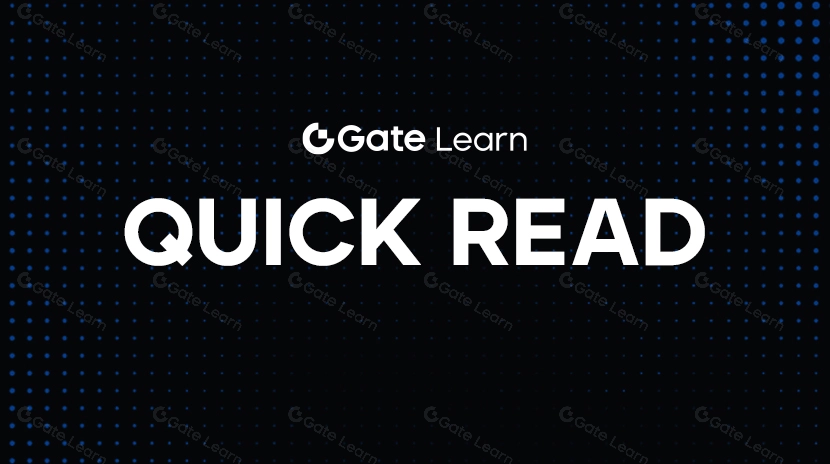
Analisando o Hack do Bybit Usando o Ataque de Assinatura Múltipla Radiant como Exemplo
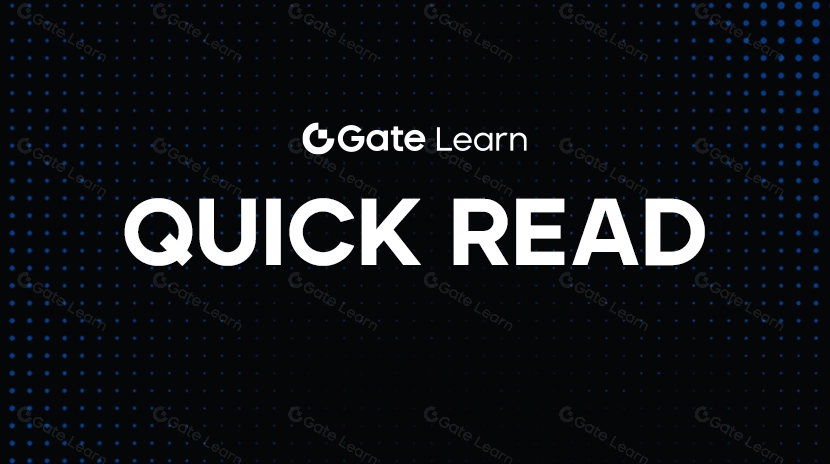
A esplêndida bolha e a verdade perdida das tokens de celebridade
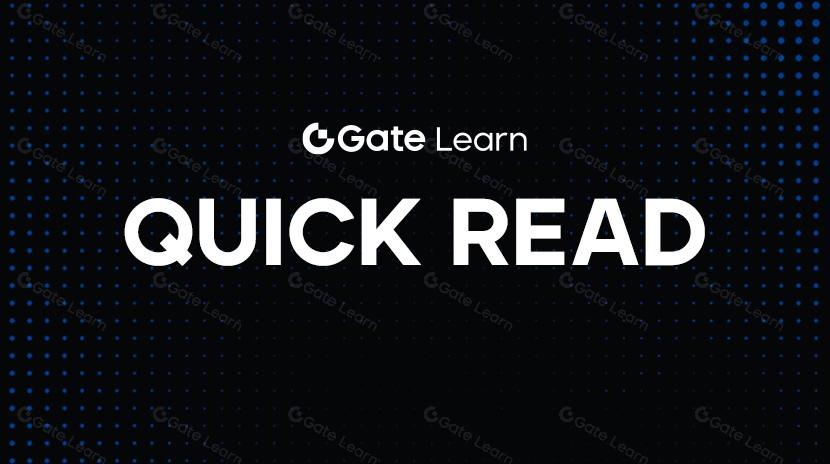
O que é FLock.io (FLOCK)?
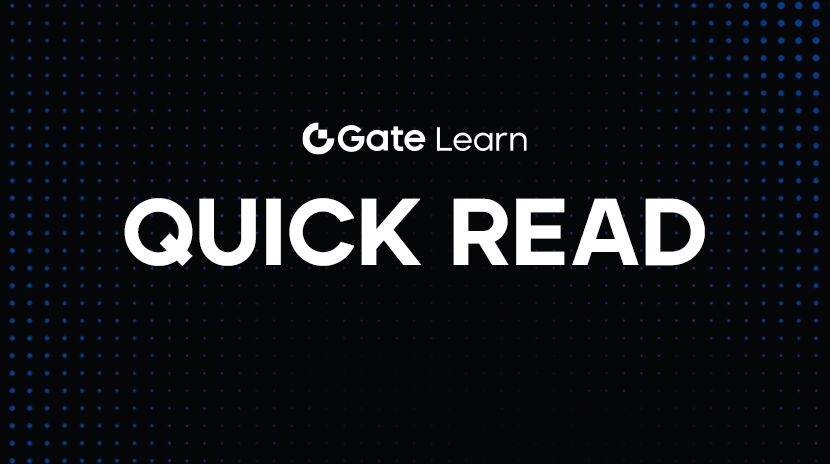
Os mais recentes desenvolvimentos de Cardano (ADA)
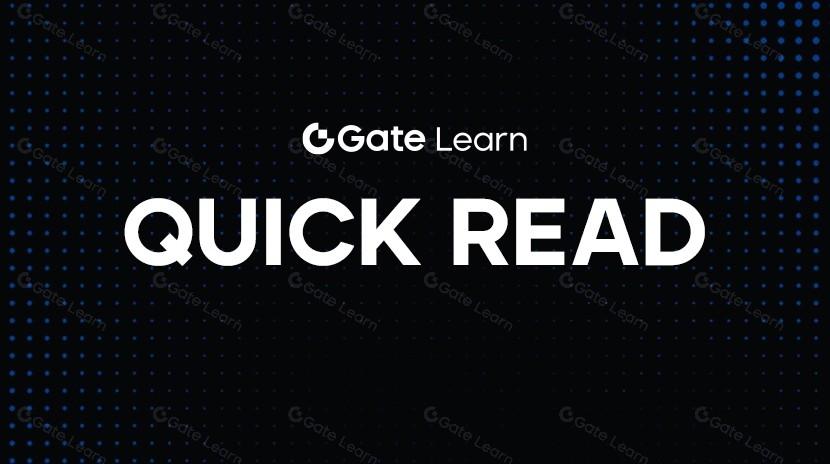
Grok AI, GrokCoin & Grok: o Hype e a Realidade
